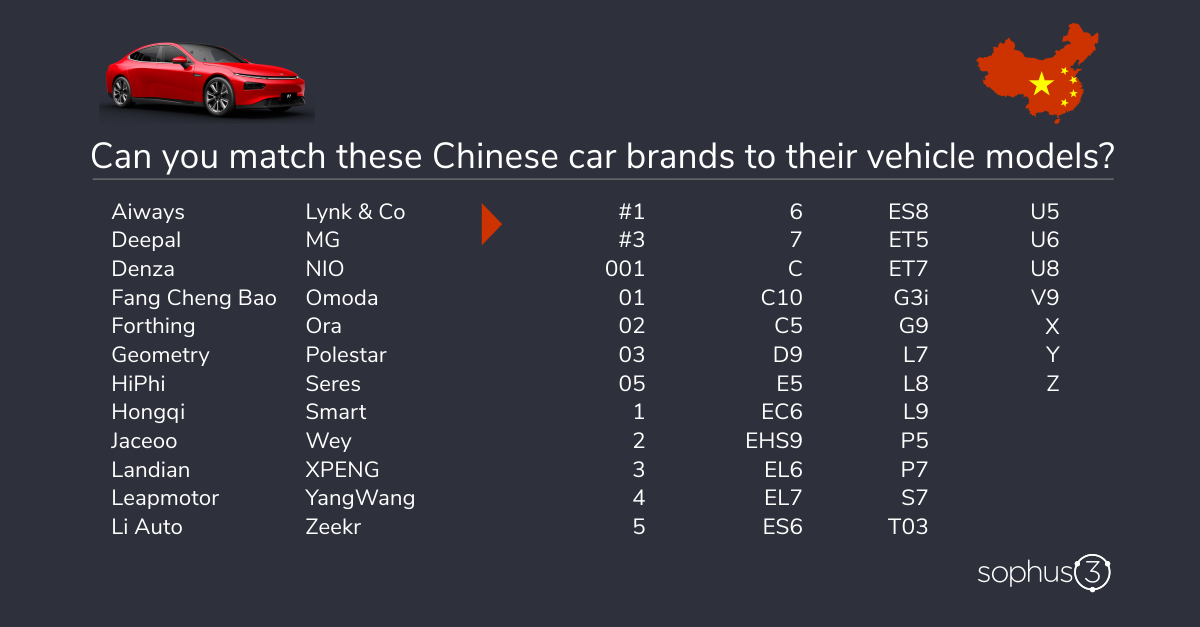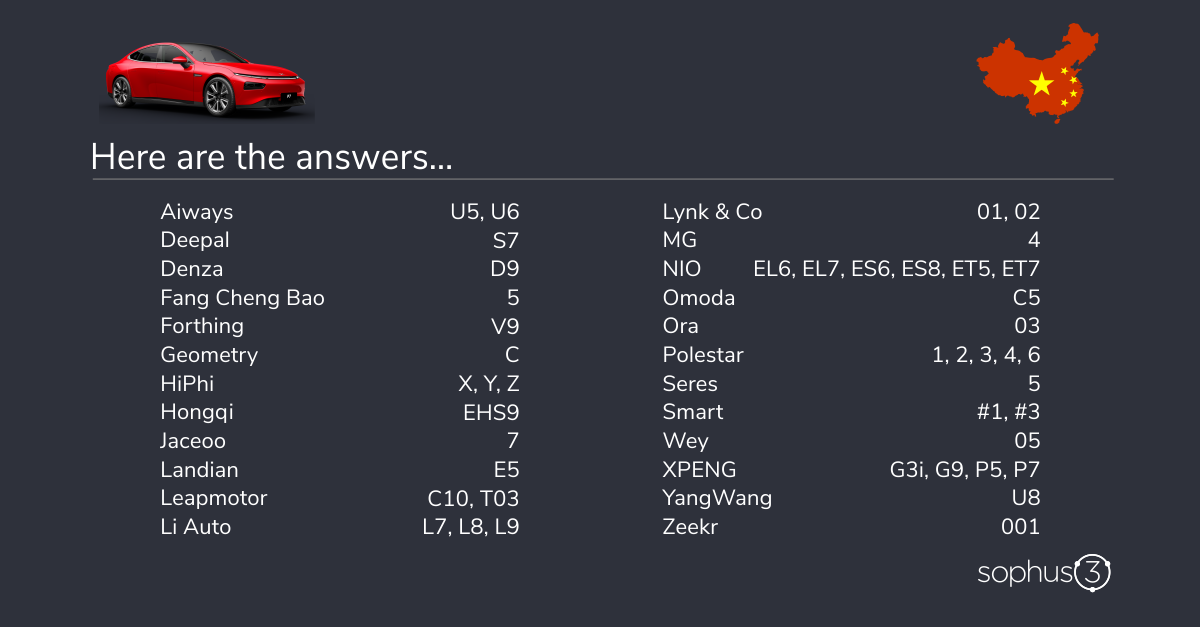Share
Chinese brands entering Europe are facing a familiar challenge in mature automotive markets: what to call their cars. The majority are resorting to the reliable, if forgettable, alphanumeric naming conventions first developed by German premium brands some decades ago.
Recently, Great Wall Motors rowed back from the ‘creatively’ named ORA Funky Cat and Wey Coffee 01, replacing them with the ORA 03 and the Wey 05 respectively.
But are these badges sufficient to capture customer imagination and loyalty, particularly when the brands themselves are unknown to the majority of European consumers? Only BYD stands apart in using figurative model names such as Seal and Dolphin.
Our graphic below has 24 new Chinese brands and 43 car models that they manufacture. How many can you match together?

Answering the quiz correctly is an almost impossible task as there is significant duplication in many of the identifiers chosen by the different brands.
Here are the brands and their models correctly aligned:

As the table shows, four brands are using variations of the number one as model designations: the Polestar 1 and Lynk & Co 01 have been joined by the Smart #1 and Zeekr 001. Two brands, Aiways and YangWang, are both using U as a suffix. Which of these, we wonder, will be first to claim U7 as their own? Two have chosen designations already used by other brands: C5, used previously by Citroën, and X which is a current Tesla model name.
Sophus3’s recent survey of Chinese brand digital platforms found there are now 86 active sites in the key 13 European markets these brands are targeting. This represents only 40% of their potential digital capacity. As they expand their footprint—and with new Chinese models being announced almost weekly in Europe—the confusion for the consumer is likely to only get worse.

